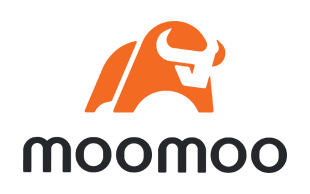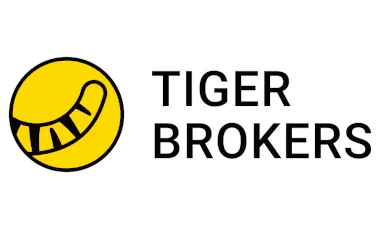Our top pick for
24/5 trading

Uber (UBER) is a US technology company that offers a number of services, including a ride-sharing service where customers can request a ride from a network of registered Uber drivers. All communication and financial transactions are conducted via Uber's app. The company was founded in 2009 and listed on the NYSE in 2019.
Our top pick for
24/5 trading

Our top pick for
Copy trading

Our top pick for
Mobile app

Use the fields above to explore the returns from a historical investment. Please refer to the charts further up this page to see performance over 5 years, or other periods. Past performance doesn't indicate future results. Capital is at risk.
Historical closes compared with the last close of $85.43
| 1 week (2025-04-28) | 9.06% |
|---|---|
| 1 month (2025-04-04) | 32.20% |
| 3 months (2025-02-06) | 22.06% |
| 6 months (2024-11-06) | 14.89% |
| 1 year (2024-05-06) | 19.47% |
|---|---|
| 2 years (2023-05-05) | 126.30% |
| 3 years (2022-05-05) | 218.41% |
| 5 years (2020-05-05) | 204.35% |
We currently don't have that product, but here are others to consider:
How we picked theseThe technical analysis gauge below displays real-time ratings for the timeframes you select. However, this is not a recommendation. It represents a technical analysis based on the most popular technical indicators: Moving Averages, Oscillators and Pivots. Finder might not concur and takes no responsibility.
Valuing Uber stock is incredibly difficult, and any metric has to be viewed as part of a bigger picture of Uber's overall performance. However, analysts commonly use some key metrics to help gauge the value of a stock.
Uber's current share price divided by its per-share earnings (EPS) over a 12-month period gives a "trailing price/earnings ratio" of roughly 18x. In other words, Uber shares trade at around 18x recent earnings.
That's relatively low compared to, say, the trailing 12-month P/E ratio for the NASDAQ 100 at the end of 2019 (27.29). The low P/E ratio could mean that investors are pessimistic about the outlook for the shares or simply that they're under-valued.
Uber's "price/earnings-to-growth ratio" can be calculated by dividing its P/E ratio by its growth – to give 46.5668. A low ratio can be interpreted as meaning the shares offer better value, while a higher ratio can be interpreted as meaning the shares offer worse value.
The PEG ratio provides a broader view than just the P/E ratio, as it gives more insight into Uber's future profitability. By accounting for growth, it could also help you if you're comparing the share prices of multiple high-growth companies.
Uber's EBITDA (earnings before interest, taxes, depreciation and amortisation) is US$3.5 billion (£2.8 billion).
The EBITDA is a measure of a Uber's overall financial performance and is widely used to measure stock profitability.
Over the last 12 months, Uber's shares have ranged in value from as little as US$54.84 up to US$87. A popular way to gauge a stock's volatility is its "beta".
Beta measures a share's volatility in relation to the market. The market (NYSE average) beta is 1, while Uber's is 1.366. This would suggest that Uber's shares are more volatile than the average for this exchange and represent, relatively speaking, a higher risk (but potentially also market-beating returns).
| Revenue TTM | US$44 billion |
|---|---|
| Operating margin TTM | 6.44% |
| Gross profit TTM | US$14.6 billion |
| Return on assets TTM | 3.89% |
| Return on equity TTM | 56% |
| Profit margin | 22.41% |
| Book value | 10.227 |
| Market capitalisation | US$169.2 billion |
| EBITDA | US$3.5 billion |
TTM: trailing 12 months
We're not expecting Uber to pay a dividend over the next 12 months.
Uber Technologies, Inc. develops and operates proprietary technology applications in the United States, Canada, Latin America, Europe, the Middle East, Africa, and the Asia Pacific. It operates through three segments: Mobility, Delivery, and Freight. The Mobility segment connects consumers with a range of transportation modalities, such as ridesharing, carsharing, micromobility, rentals, public transit, taxis, and other modalities; and offers riders in a variety of vehicle types, as well as financial partnerships products and advertising services. The Delivery segment allows consumers to search for and discover restaurants to grocery, alcohol, convenience, and other retails, as well as order a meal or other items, and either pick-up at the restaurant or have it delivered; and provides Uber direct, a white-label delivery-as-a-service for retailers and restaurants, as well as advertising services. The Freight segment manages transportation and logistics network, which connects shippers and carriers in digital marketplace, including carriers upfronts, pricing, and shipment booking; and offers on-demand platform to automate logistics end-to-end transactions for small-and medium-sized business to global enterprises. The company was formerly known as Ubercab, Inc. and changed its name to Uber Technologies, Inc. in February 2011. Uber Technologies, Inc. was founded in 2009 and is headquartered in San Francisco, California.
We used Finder's proprietary algorithm to find the 10 best stocks under $10 on the ASX.
We used Finder's proprietary algorithm to find Australian-listed companies that have strong fundamentals and have a share price under $5.
Best performers included Jindalee Lithium, Dimerix and CGN Resources.
Top gainers included Boss Energy, Fineos Corporation Holdings and Cedar Woods Properties.
You often hear people talk about whether the ASX200 is up, down or flat. So, why is it such a big deal?
Find out the different ways you can invest in the S&P 500 index from Australia.
Following a couple of lean years for dividend investors, here are 10 ideas you could consider in your portfolio.
If you’re thinking of investing in gold, our guide will explain how and where to buy gold in Australia as well as the pros and cons of investing in it.
Find cheap stock brokerage in Australia when buying and selling shares on the ASX and other international exchanges.
Follow these tips to find the best share trading platform for you.